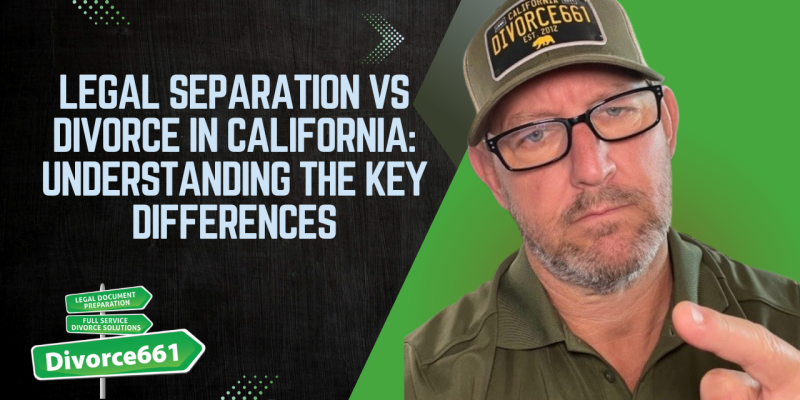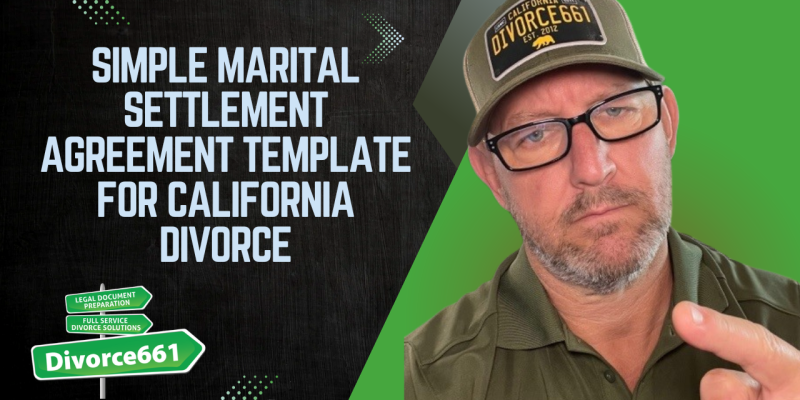What to Consider When Selling a Home After Divorce
Dividing assets after a divorce is never simple, and for many couples, the family home stands out as the most valuable shared asset. If you’re navigating the complexities of selling your home after divorce, understanding the legal, financial, and emotional aspects involved is crucial. I’m Tim Blankenship from Divorce661, and I’m here to guide you through what you need to consider to protect your interests and make the process as smooth as possible.
Why the Family Home Requires Special Attention
The family home often represents more than just a financial asset—it holds emotional value, memories, and stability. When divorce enters the picture, deciding what to do with the home can become a significant source of stress and potential conflict. Whether you decide to sell immediately or wait until after the divorce is finalized, having a clear plan is essential.
Key Legal Considerations: Put Everything in Writing
One of the most important steps is ensuring your divorce judgment explicitly details the terms of the home sale. This clarity helps prevent confusion and protects your rights. Some of the critical questions to address include:
- Who will continue living in the home until it sells?
- Who selects the real estate agent and manages the sale process?
- How will the proceeds be divided after paying off the mortgage and any liens?
Having these details clearly outlined in your divorce judgment or a written agreement ensures both parties are on the same page and reduces the risk of disputes later. If possible, filing this agreement with the court adds an extra layer of enforceability.
Timing the Sale: Before or After Divorce Finalization?
Many couples wonder whether to list the home before or after the divorce is finalized. While many prefer to wait until the judgment is entered, it’s not always necessary. The key is that any agreement about the sale—whether pre- or post-divorce—should be documented thoroughly. This documentation protects your equity and ensures a smoother sale process.
Financial Implications: Taxes and Selling Costs
Selling a home after divorce isn’t just about signing papers and handing over keys. You also need to consider:
- Capital Gains Taxes: If your home has appreciated significantly, you might owe capital gains taxes. However, most people qualify for the $250,000 per person exclusion if they lived in the home for at least two of the last five years.
- Selling Costs: Realtor commissions, staging expenses, and necessary repairs can add up. Agreeing in advance on how to handle these costs helps avoid surprises.
A Real Client Story: Selling Before Divorce Finalization
Recently, I worked with a couple who needed to sell their home before their divorce was finalized. We drafted a detailed written agreement covering every step—from agent selection and handling showings to dividing the sale proceeds. Because everything was clearly documented, the home sold quickly, and both parties received their fair share without any issues or surprises.
How Divorce661 Can Help You Through the Process
At Divorce661, we specialize in handling the real-life logistics that come with divorce, including the sale of your home. Our services include:
- Drafting clear, comprehensive agreements that prevent future disputes
- Collaborating with real estate professionals to manage the sale smoothly
- Providing flat-fee divorce services with real estate support
- Offering 100% remote assistance throughout California
Our goal is to help you protect your equity, avoid drama, and move forward with confidence and peace of mind.
Planning Your Home Sale After Divorce
If you’re preparing to sell your home during or after divorce, it’s vital to plan carefully. Protecting your share of the equity and understanding the legal and financial details can make a significant difference in your post-divorce life.
Visit Divorce661.com to schedule a free consultation. We’ll help you navigate the sale properly, ensuring your interests are safeguarded every step of the way.
Final Thoughts
Selling a home after divorce can be complicated, but with the right guidance, it doesn’t have to be overwhelming. Clear agreements, understanding timing, accounting for taxes and costs, and working with experienced professionals are all key to a successful sale.
Remember, the goal is to protect your equity and reduce stress during an already challenging time. With careful planning and expert support, you can move forward confidently into your next chapter.










